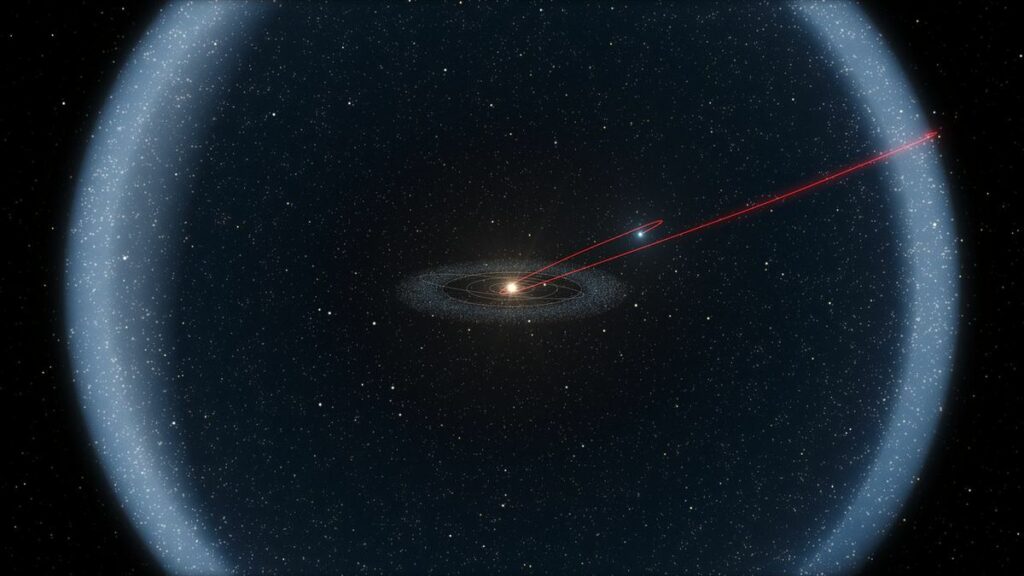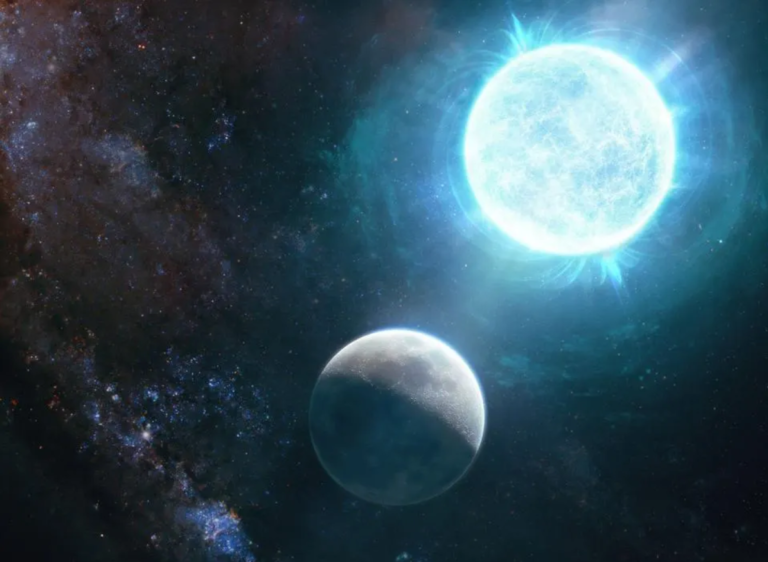‘Rogue’ Star Will Not Encounter Our Solar System for Another 29,000 Years
“This eliminates one fewer cosmic threat from our concerns!”
The distant future of our solar system is now deemed safe from the potential threat of an encounter with a wandering deceased star.
In the previous year, scientists utilized the Gaia space telescope to analyze the trajectory of a rogue white dwarf star known as WD 0810–353. The predictions indicated that this star was on course to interact with our solar system in approximately 29,000 years. Although this span might seem lengthy from a human perspective, it is relatively brief on a cosmic scale. For context, the sun is not expected to deplete its hydrogen and expand into a red giant for another 5 billion years, a process that would annihilate Earth and the inner planets.
However, new research has provided reassuring news, disclosing that our planet, at the very least, need not worry about the upheaval caused by the runaway white dwarf WD 0810–353. Contrary to earlier predictions, the “rogue” star is not only projected to bypass the solar system; it might not be on a trajectory toward us at all, according to astronomers. “The approach speed measured by the Gaia project is incorrect, and the anticipated close encounter between WD0810–353 and the sun is, in fact, not going to transpire,” stated astronomer Stefano Bagnulo. “In reality, WD0810–353 may not be advancing toward the sun at all. This eliminates one fewer cosmic hazard we have to worry about!”
What did Gaia get wrong?
Gaia, a space telescope currently engaged in constructing an exceptionally precise three-dimensional map of over a billion stars within our Milky Way galaxy, achieves this feat by meticulously measuring star positions. This involves capturing a “slice” of the sky and subsequently reobserving it to track changes in star positions.
In 2022, astronomers Vadim Bobylev and Anisa Bajkova utilized the extensive Gaia dataset to identify stars seemingly approaching the solar system. This exploration led them to WD 0810–353, a white dwarf star—a dense stellar remnant resulting from the demise of stars with masses akin to the sun.
Our sun is anticipated to transform into a white dwarf approximately one billion years after its transformative red giant phase, during which the outer layers will expand, cool, and disperse, leaving behind a glowing core.
WD 0810–353, positioned about half a light-year from the solar system (roughly 31,000 times the distance between Earth and the sun), offers a glimpse into the sun’s potential appearance during its white dwarf phase.
While this proximity might not seem particularly close, it is near enough for the gravitational influence of WD 0810–353 to potentially disrupt the Oort cloud—a collection of comets and icy bodies at the solar system’s edge.
The Oort cloud spans a range between 2,000 and 100,000 times the distance from Earth to the sun, encircling the solar system’s central star. When passing stars like WD 0810–353 disturb the Oort cloud, the star’s gravitational pull could propel some of these loosely bound icy bodies toward the inner solar system and Earth.
However, the question arises: what transpired with the observations of this rogue white dwarf? What led astronomers to believe it was on a trajectory toward us, and how do we now ascertain that it likely isn’t?

A magnetic mix-up
During its observations of WD 0810–353, it turns out that Gaia overlooked a noteworthy and unusual characteristic of this white dwarf—it possesses an exceptionally large magnetic field.
“Remarkably, this aged white dwarf also harbors an extensive magnetic field,” elucidates Eva Villaver, an astronomer at the Astrobiology Center in Spain and co-author of the study. “In astronomy, magnetic fields play a crucial role in comprehending various physical aspects of a star, and neglecting them could lead to misinterpretations of physical phenomena.”
Astronomers had initially concluded that WD 0810–353 was on a trajectory toward our solar system by calculating its radial velocity—the speed of an object along the line of sight from the observer to the object. This involves examining the spectrum of light emitted by the star, breaking it down into constituent wavelengths.
If a star is moving away, the wavelengths are stretched, resulting in a shift of light toward the red end of the electromagnetic spectrum, known as redshift. Conversely, if a star is moving toward us, the emitted light’s wavelength is compressed, causing a shift toward the blue end, termed “blueshift.”
However, magnetic fields can also influence a star’s light spectrum, whether it’s alive or a white dwarf, by splitting spectral lines and shifting lines to different wavelengths.
Crisis averted…
To ascertain whether this was the case for WD 0810–353, Bagnulo employed the Very Large Telescope (VLT) situated in northern Chile, specifically utilizing an instrument known as the FOcal Reducer and low dispersion Spectrograph 2 (FORS2).
FORS2 enabled the team to obtain an exceptionally accurate depiction of the spectra of WD 0810–353 and assess whether its powerful magnetic field was influencing Gaia’s observations. This is feasible because, ordinarily, light waves oscillate in all directions; however, when exposed to a magnetic field, they begin to oscillate in a preferred direction, becoming “polarized.”
By utilizing polarized light emitted by this white dwarf, the team constructed a model of the dead star’s magnetic field. They discovered that its trajectory and velocity could indeed be attributed to a robust magnetic field. Consequently, it appears that the solar system is not under imminent threat from this particular rogue white dwarf.
The team’s research is published in the Astrophysical Journal.
This article is republished from SpaceCom under a Creative Commons license. Read the original article.
Do not forget to share your opinion with us to provide you with the best posts !




0 Comments